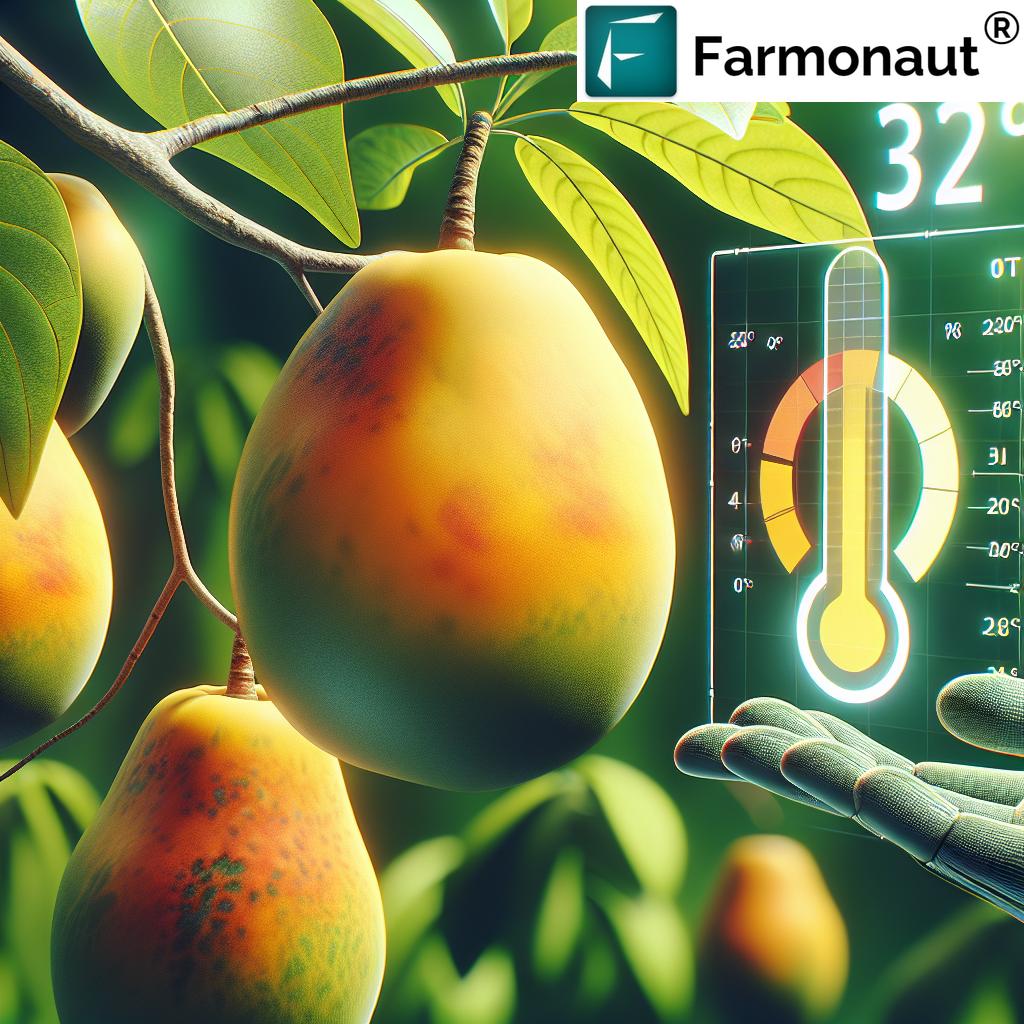Unleash the Power of Pawpaws: The Climate-Resilient Fruit Revolutionizing Sustainable Farming
In the face of climate change, farmers across North America are turning to an unexpected ally: the humble pawpaw. This native North American fruit is emerging as a climate-resilient crop that’s transforming the landscape of sustainable farming. From New York to Kentucky, pawpaw orchards are sprouting up, offering a promising solution for crop diversification and adaptation to extreme weather patterns.

The Rise of Climate-Resilient Pawpaw Farming
In Lockport, New York, just east of Niagara Falls, Kyle Townsend and Mitchell Gunther are pioneering climate-resilient pawpaw farming. Their decision to establish a pawpaw orchard was born out of necessity and innovation. As traditional crops like apples and peaches fell victim to erratic weather patterns, these forward-thinking farmers saw an opportunity in pawpaws.
“Just hear me out,” Townsend recalls telling his business partner, “we’re putting in a pawpaw orchard.” This bold move represents a growing trend in sustainable pawpaw cultivation, as farmers seek alternative crops for climate change.
Pawpaws: Nature’s Answer to Changing Climates
- Adaptable to a wide range of conditions
- Tolerant of both warm and cold temperatures
- Ability to produce multiple flower sets after frost damage
The fruit adaptability of pawpaws is remarkable. Blake Cothron, owner of Peaceful Heritage Nursery in Stanford, Kentucky, explains, “Pawpaws have the unusual ability to produce more flowers if they lose their first set of blooms to a cold snap, making them hardier than traditional fruit trees.”
This resilience is attracting attention from farmers and horticulturists alike, who see pawpaws as a key player in native fruit adaptation to climate change. As the climate warms and growing zones shift, pawpaws are proving to be a smart choice for farmers looking to future-proof their orchards.
Growing Pawpaws in Northern Regions: A New Frontier
The concept of growing pawpaws in Northern regions is gaining traction. Western New York, once considered the fringe of the pawpaw’s natural range, is now becoming a hotspot for pawpaw cultivation. This shift is a testament to the changing climate and the pawpaw’s ability to thrive in new environments.
Anya Stansell, a Cornell University fruit-production specialist, notes a significant increase in demand for pawpaw trees. “The cost has doubled or even tripled over the last several years,” she reports, indicating a growing interest in pawpaw orchards for crop diversification.

The Market Potential of Pawpaws
The pawpaw demand and market potential is on the rise. From chefs seeking hundreds of pounds of fruit to craft breweries eager to create unique pawpaw-flavored beverages, the market is ripe for expansion. Townsend’s experience reflects this trend: “Sometimes it feels like a race to get trees in the ground, to get fruit production to where you want it – as fast as you can.”
For farmers looking to tap into this growing market, tools like Farmonaut’s Satellite Weather API can provide valuable insights for optimal pawpaw cultivation.
Challenges and Opportunities in Pawpaw Cultivation
While pawpaws offer numerous advantages as alternative crops for extreme weather, they are not without challenges. The fruit’s short shelf life and sensitivity to bruising present obstacles for large-scale commercial production. However, these challenges are spurring innovation in the field.
- Developing pawpaw varieties with longer shelf life
- Exploring refrigeration and packaging solutions
- Creating value-added products like frozen pulp for smoothies and ice cream
Adam D’Angelo, a plant breeder working on Project Pawpaw, is at the forefront of these efforts. His work aims to bring pawpaws to supermarket shelves while preserving their unique flavor profile.
The Future of Sustainable Farming with Pawpaws
As climate change continues to impact agriculture, pawpaw orchards represent a promising avenue for sustainable farming. The fruit’s natural resilience, coupled with growing consumer interest in rare fruit varieties, positions pawpaws as a key player in the future of North American agriculture.
Farmers like Townsend and Gunther are not just growing fruit; they’re cultivating resilience. “We’re trying to build a little refuge here,” Gunther says, highlighting their commitment to preserving local ecology alongside their pawpaw cultivation.
For those interested in exploring pawpaw cultivation or other innovative farming techniques, Farmonaut’s mobile app offers valuable resources and tools.
Conclusion: Embracing Climate-Resilient Agriculture
The rise of pawpaws in sustainable farming is more than just a trend; it’s a testament to the power of adaptation and innovation in agriculture. As farmers and researchers continue to unlock the potential of this native fruit, pawpaws are set to play a crucial role in shaping a more resilient and sustainable future for North American agriculture.
Whether you’re a farmer looking to diversify your crops or an enthusiast interested in sustainable agriculture, the pawpaw’s journey from obscurity to agricultural stardom offers valuable lessons in resilience and adaptation. As we face the challenges of a changing climate, the humble pawpaw stands as a symbol of nature’s capacity to thrive and evolve.
For more information on innovative farming techniques and crop management, visit Farmonaut’s API Developer Docs.

